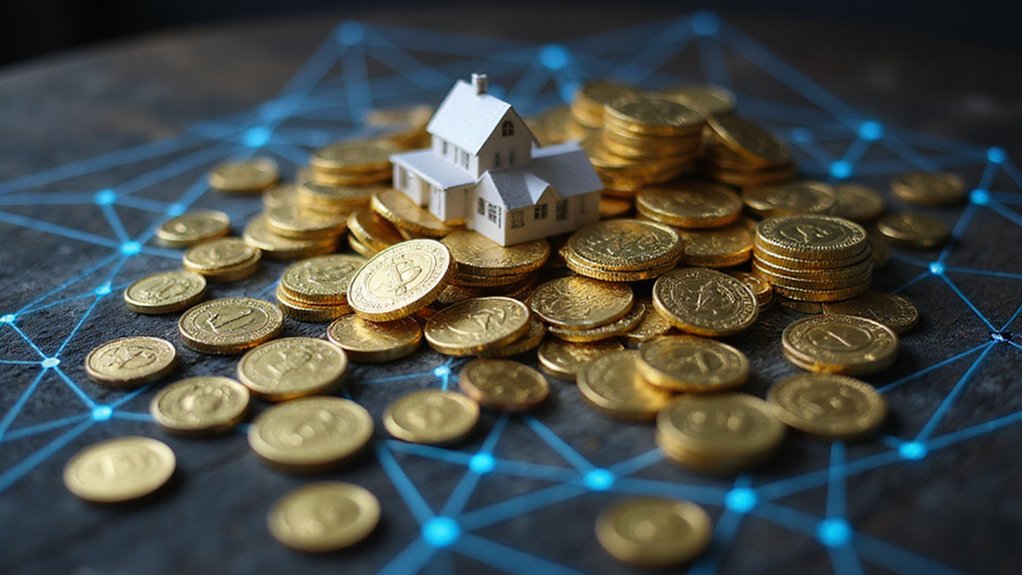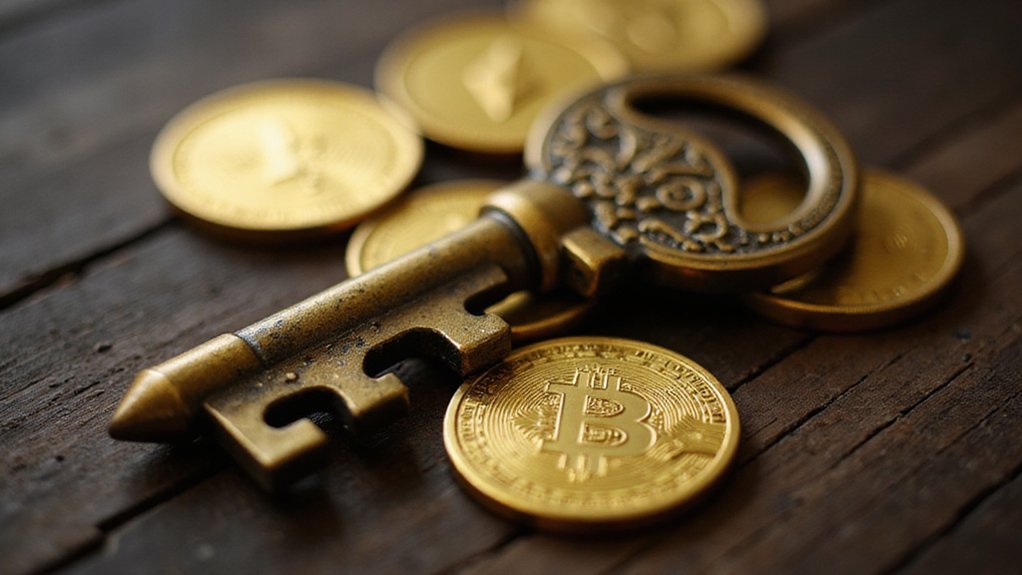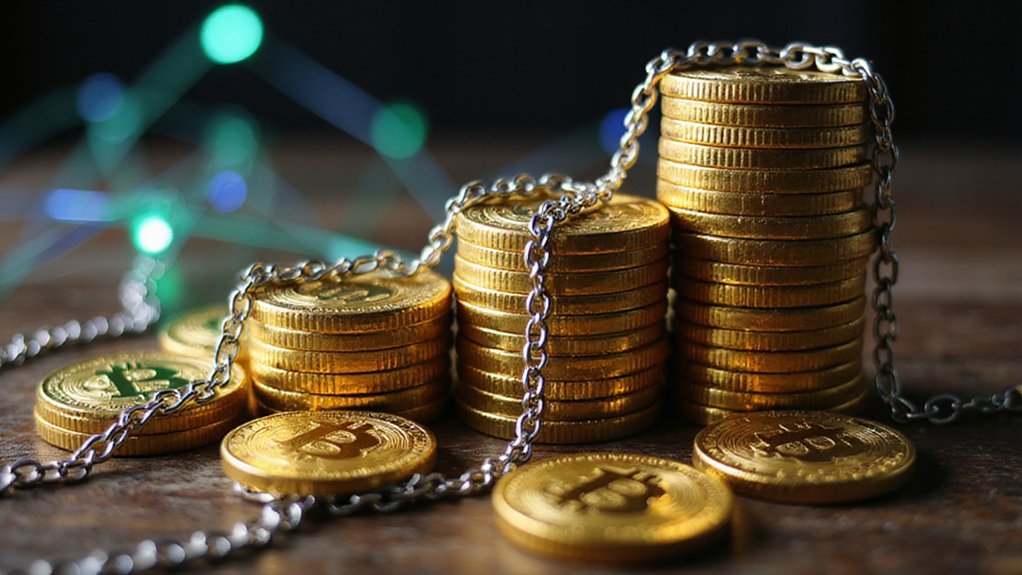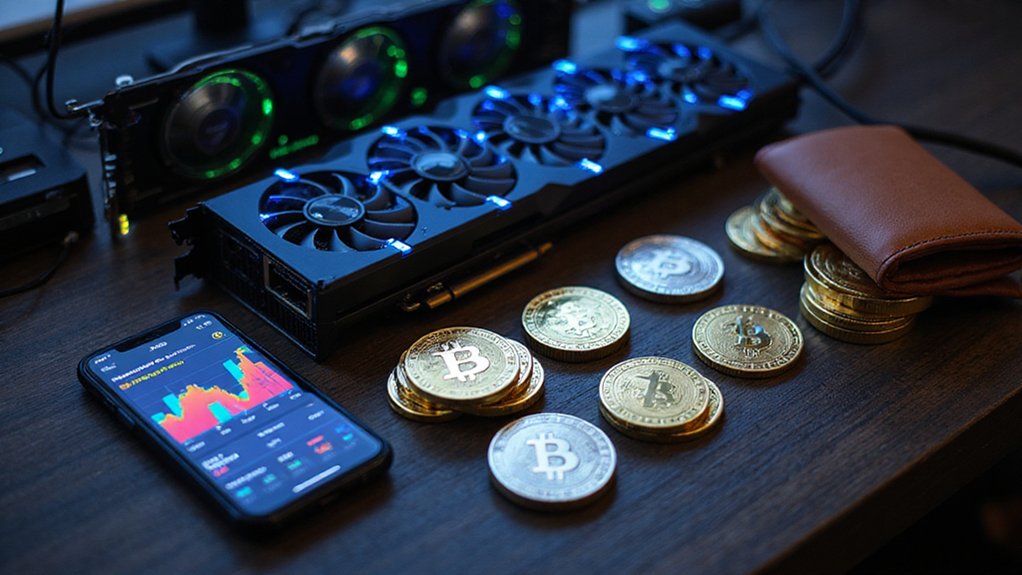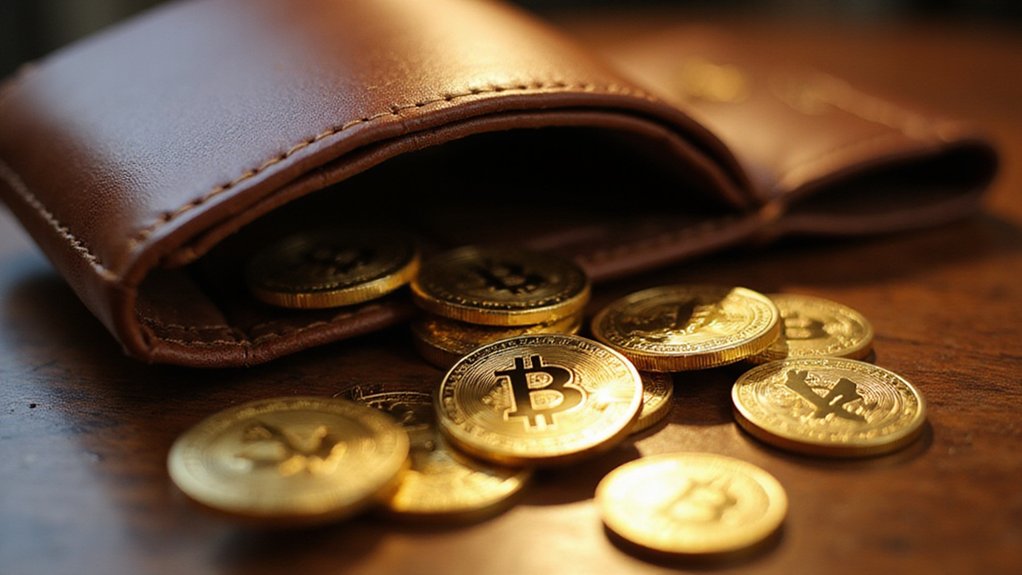Tokenization transforms traditional assets into blockchain-based digital tokens, enabling fractional ownership and theoretically streamlined trading through smart contracts. Security tokens represent ownership stakes while complying with regulations, utility tokens provide ecosystem access, and payment tokens function as digital currency. This process eliminates intermediaries, increases liquidity, and democratizes investment access—though whether digitization truly simplifies or merely obscures economic relationships remains debatable. The fundamental mechanics reveal both revolutionary potential and persistent regulatory complexities that shape modern financial innovation.

While the financial world has spent decades perfecting the art of making simple concepts unnecessarily complex, tokenization in cryptocurrency represents a curious reversal—taking the genuinely intricate process of asset digitization and presenting it as merely “putting things on the blockchain.”
At its core, tokenization involves the creation of blockchain-based tokens that represent ownership rights in real or digital assets, effectively transforming traditional securities into digital instruments that can be fractionally owned, transparently tracked, and theoretically traded with the efficiency that has long eluded conventional markets.
The process begins with asset identification and structuring, where anything from real estate to intellectual property becomes a candidate for digital transformation. Assets must be configured for fractional ownership from inception, enabling token holders to participate proportionally in income streams or value appreciation—essentially creating digital versions of REIT-style structures that would make traditional fund managers simultaneously envious and bewildered.
Token creation requires selecting between fungible tokens (interchangeable units of equal value) and non-fungible tokens (unique assets with variable worth), alongside choosing an appropriate blockchain platform. The selection process involves considerations that extend far beyond technical specifications, encompassing regulatory compliance, security requirements, and the peculiar reality that immutable blockchain records can represent assets that remain distinctly mutable in the physical world.
Security tokens represent ownership in traditional assets while adhering to securities regulations, utility tokens provide ecosystem access without ownership rights, payment tokens function as digital currency, and NFTs represent unique digital items. Each category operates within distinct regulatory frameworks that continue evolving as regulators attempt to categorize innovations that persistently defy traditional classifications.
The advantages appear compelling: reduced transaction friction, enhanced market efficiency, democratized access through fractional ownership, and increased liquidity through secondary market trading. Tokenization promises to eliminate intermediaries while creating transparent, immutable ownership records that theoretically resolve the trust issues that have plagued traditional securities markets. The blockchain technology behind tokenization ensures auditability of transactions, providing greater transparency and traceability that traditional financial systems struggle to match. Unlike traditional currency controlled by governments and banks, tokenized assets operate in a decentralized manner without central authority oversight. This approach aligns with the principles of decentralized finance, which enables peer-to-peer transactions directly between users without requiring traditional banking intermediaries.
However, the transformation of complex asset ownership into blockchain tokens raises questions about whether digitization truly simplifies the underlying economic relationships or merely obscures them behind technological sophistication.
The token economy’s promise of efficiency and fairness remains contingent upon resolving fundamental challenges that extend well beyond blockchain’s technical capabilities.
Frequently Asked Questions
What Are the Tax Implications of Owning Tokenized Assets?
Tax implications of owning tokenized assets depend heavily on jurisdiction and asset classification.
Most authorities treat tokens as property, triggering capital gains upon sale, trade, or purchase transactions. Income from staking, airdrops, or mining requires reporting at fair market value.
Mere holding typically avoids taxation—a small mercy in an increasingly complex regulatory landscape. Different token categories (security versus utility) influence treatment, while cross-border considerations add layers of bewildering complexity requiring professional guidance.
How Do I Store Tokenized Assets Securely in a Wallet?
Securing tokenized assets requires a multi-layered approach combining hardware wallets for offline storage, multi-signature authentication, and institutional custody solutions for larger holdings.
Cold storage devices like Ledger or Trezor provide ideal security, while hot wallets offer convenience at increased risk.
Multi-factor authentication, regular private key backups, and insurance coverage remain essential.
The choice between custodial and non-custodial solutions ultimately depends on one’s risk tolerance and technical expertise.
Can Tokenized Assets Be Converted Back to Physical Assets?
Yes, tokenized assets can typically be converted back to physical assets, though the process depends entirely on the legal framework and custodial arrangements established during tokenization.
Token holders must navigate redemption procedures involving verification, compliance checks, and custodian cooperation.
However, not all tokenized assets offer physical redemption—some exist purely as investment vehicles.
The conversion’s feasibility hinges on asset type, regulatory environment, and operational infrastructure supporting the tokenization ecosystem.
What Happens to My Tokens if the Blockchain Network Fails?
When blockchain networks fail, tokens become temporarily inaccessible—frozen digital certificates awaiting network recovery.
During outages (which can persist for hours), holders cannot transfer, trade, or utilize their tokens, effectively rendering them dormant.
While distributed ledger replication typically enables recovery once nodes restart, permanent network collapse could theoretically make tokens worthless.
The irony? Decentralized systems lack centralized authorities to restore lost assets, leaving collective node operators responsible for resurrection.
Are There Minimum Investment Amounts Required for Tokenized Assets?
Minimum investment amounts for tokenized assets vary dramatically—from practically nothing to substantial thresholds depending on regulatory requirements and platform policies.
While blockchain technology theoretically enables fractional ownership down to cents, practical considerations like transaction costs, compliance requirements, and market liquidity often establish meaningful minimums.
Real estate tokens might require $100, while securities tokens could demand accredited investor thresholds of $25,000 or more, somewhat ironically recreating traditional barriers.
